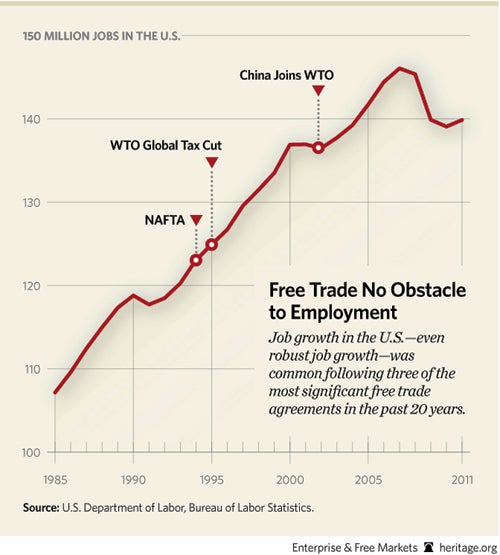According to a recent USA Today/Gallup poll, creating good jobs should be the number one priority for the next President. One of the best ways to create good jobs is to expand free trade. Consider the following numbers:
- In the five years after the North American Free Trade Agreement (NAFTA) took effect on January 1, 1994, total U.S. employment increased by 11.1 million jobs. NAFTA wasn’t responsible for all those new jobs, but it obviously didn’t cause any overall U.S. job losses, either.
- In the five years after the U.S. joined the World Trade Organization (WTO) on January 1, 1995, total U.S. employment increased by 11.9 million jobs. This trade deal created the biggest global tax cut in history as 128 countries around the world slashed their tariffs.
- In the five years after China joined the WTO on December 11, 2001, total U.S. employment increased by 9.9 million jobs.
No one denies that free trade has an impact on the kinds of jobs available to Americans. For example, data from the U.S. Bureau of Labor Statistics show that since China joined the WTO, the U.S. has lost 213,000 sewing-machine operator jobs paying $11 an hour. But we’ve also added 537,000 new jobs for registered nurses paying $33 an hour.
All those new nursing jobs aren’t entirely the result of trade with China, of course. But the money Americans save by having the freedom to buy low-priced imported shoes and t-shirts from China and elsewhere does not vanish into thin air. It creates new, better jobs for other Americans. It’s exactly the kind of stimulus Washington is always promising, but we don’t have to mortgage our future to do it—and it actually works.
Saying that “free trade destroys jobs” does not tell the whole truth. After each of the three biggest free trade deals of the last 20 years was passed, the U.S. economy added millions of jobs. Those were trades well worth making.


























